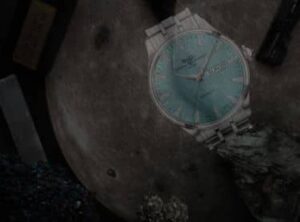Journey Through Time: The Rich History of Ball Watch Company
If you’re rocking a Ball watch, you’re strapping on a story that starts with a fiery train crash, pivots to an obsessive Cleveland jeweler, and ends with a legacy that’s somehow both old-school and cutting-edge. If Oppenheimer and James Bond had a baby, and that baby became a timepiece, it would be a Ball Watch.
Whether you’re a lifelong collector or someone who just wandered into the horology rabbit hole, the history of Ball Watch Company is a wild ride worth knowing. Buckle up. This story’s got wrecks, regulations, radioactive glow sticks, and more precision than a NASA countdown.

Table of Contents
ToggleIt Started With a Bang
Picture it: Ohio, 1891. Two trains collide in a tiny town called Kipton. The aftermath? Nine dead and one very bad excuse: one of the conductor’s watches had stopped … for four minutes. That’s all it took to turn a busy railway into a disaster movie.
Enter Webb C. Ball: local jeweler, soon-to-be timekeeping legend, and the kind of guy who probably alphabetized his spice rack. He was brought in to clean up the railroad’s act. How? By creating a no-nonsense, highly detailed watch inspection system that made sure every conductor’s timepiece was up to snuff. We’re talking mandatory standards, regular checkups, and zero room for sloppiness.
The results? Game-changing. Webb Ball basically invented the idea that watches should actually keep time, not just give a close-enough guess. He set the groundwork for the modern watch industry as we know it.
Railroad-Ready
A Ball-approved watch wasn’t just a cool accessory. It was a survival tool. These watches had to pass strict tests to ensure they didn’t glitch, hiccup, or mysteriously stall.
Key features? Think big, bold Arabic numerals you could read on a bumpy train, anti-magnetic materials, lever-set movements to prevent accidental time changes, and at least 17 jewels. No, not the shiny kind—watch jewels that reduce friction and improve accuracy. Basically, these were the Fast & Furious muscle cars of pocket watches: powerful, reliable, and built for action.
And if your watch didn’t pass inspection? You weren’t getting on that train. Ball wasn’t playing.
Glow Tubes and Shock-Proof Magic: Ball in the Modern Era
Ball didn’t stay stuck in its railroad roots. As time marched on, the company evolved. Today’s Ball watches are packed with James Bond-level features that still echo their rugged, precision-first beginnings.
Here’s what the modern lineup includes:
- Tritium gas tube illumination: These little beauties glow 24/7 for up to 25 years with no charging, no light exposure required, and no drama. It’s like carrying a tiny, radioactive superhero on your wrist (don’t worry—it’s totally safe).
- SpringLOCK® and Amortiser® systems: Think of these as air bags for your watch movement. They absorb shocks so your watch keeps ticking even if life gets bumpy.
- COSC chronometer certification: That’s Swiss-speak for “this thing is crazy accurate.”
Whether you’re spelunking, skydiving, or just trying to survive a Monday morning meeting, a Ball watch will keep up and look slick doing it.
Vintage Ball: Grandpa’s Watch, but Cooler
Vintage Ball watches are a treasure trove for collectors. These are relics of a time when punctuality could literally save lives. Many of them still run beautifully today, especially if they’ve had some TLC from a pro skilled in Ball watch repair.
Look for models with phrases like “Official RR Standard” engraved on the dial or case. You might find pocket watches that once lived in the vest of a railroad engineer or wristwatches from the 1950s that ooze Mad Men swagger.
Yes, some will show wear. But with many original parts still floating around, and skilled techs who can MacGyver what isn’t, restoring a vintage Ball is totally doable. And totally worth it.
Still the Standard After All These Years
Ball didn’t take the easy route and go full bling or build watches that look like tiny sci-fi drones. Nope. They stayed loyal to their roots: legibility, durability, accuracy. It’s the “no-frills, all-thrills” approach to watchmaking. Think of it as the Bruce Springsteen of wristwear: tough, dependable, and totally American (even if production is now Swiss-based).
And that consistency? It still resonates. Whether you’re a firefighter, field scientist, or just someone who likes their watches with a side of history, a Ball delivers without obnoxiously screaming about it.
Final Stop: Why a Ball Belongs on Your Wrist
Choosing a watch these days can feel like choosing a streaming service. Flashy, fast, and forgettable options are everywhere. But a Ball? That’s the HBO of watches: solid, respected, and always worth your time.
If you want to bring an old Ball gem back to its full glory, professional watch repair can take an aging beauty and make it shine and tick again.
With Ball, you’re buying into a legacy built on safety, precision, and innovation. Whether your style leans vintage or you want something with modern guts and classic charm, Ball has a piece that fits the bill and your wrist. So next time someone asks you about your watch, you won’t just say “Ball.” You’ll say, “Let me tell you a story …”

